Two to Tango |
||||||||||||||||
 |
 |
|||||||||||||||
Set consists of: Knitted top with lace pattern in DROPS Alpaca and shoulder piece with lace pattern in DROPS Alpaca. Size: S - XXXL
DROPS 178-59 |
||||||||||||||||
|
GARTER STITCH (worked in the round): 1 ridge = 2 rounds. Knit 1 round and purl 1 round. GARTER STITCH (back and forth): 1 ridge = knit 2 rows. PATTERN: See diagrams A.1 and A.2. Diagrams show all rows in pattern seen from the right side. DECREASE TIP BODY: Begin 3 stitches before marker thread in the side and knit 2 together, knit 2 (marker thread is between these stitches), slip 1 stitch knitwise, knit 1, pass slipped stitch over stitch worked. DECREASE TIP ARMHOLE: Decrease inside 3 stitches in garter stitch. All decreases are done from the right side. Decrease as follows after 3 stitches in garter stitch: Slip 1 stitch knitwise, knit 1, pass slipped stitch over stitch worked Decrease before 3 stitches as follows: Knit 2 together. ---------------------------------------------------------- TOP: Worked in the round on circular needle up to armhole, then work front and back piece separately. Cast on 480-528-576-624-720-768 stitches on circular needle size 2.5 mm / US 1.5 with Alpaca. Knit 1 round, then work as follows: * Knit 1, purl 3 *, repeat from *-*. Continue rib like this. When piece measures 2 cm / ¾", decrease all 3 purl stitches to 2 purl stitches by purling 2 together = 360-396-432-468-540-576 stitches. When piece measures 3 cm / 1", decrease every other 2 purl stitches to 1 purl stitch = 300-330-360-390-450-480 stitches. When piece measures 4 cm / 1½", decrease the remaining 2 purl stitches to 1 purl stitch = 240-264-288-312-360-384 stitches. When rib measures 6 cm / 2⅜", switch to circular needle size 3 mm / US 2.5, knit 1 round then work as follows: Work A.1 over all stitches (= 20-22-24-26-30-32 repetitions of A.1). When A.1 has been worked 1 time vertically, there are 200-220-240-260-300-320 stitches on round. Insert 2 marker threads in piece; 1 at the beginning of round and 1 after 100-110-120-130-150-160 stitches = sides. Work as follows: Stockinette stitch over the first 110-120-130-140-160-170 stitches, A.2 over the next 80-90-100-110-130-140 stitches (= A.2 is directly above 8-9-10-11-13-14 repetitions of A.1), stockinette stitch over the last 10 stitches. Continue pattern like this. When piece measures 12 cm / 4¾", decrease 1 stitch on each side of markers in the side (= 4 stitches decreased) - READ DECREASE TIP BODY! Decrease every 6-6-7-7-7-7 cm / 2½"-2½"-2¾"-2¾"-2¾"-2¾" 5 times in total = 180-200-220-240-280-300 stitches. When piece measures approx. 39-40-41-42-43-44 cm / 15¼"-15¾"-16⅛"-16½"-17"-17¼" and 3 rounds remain before an entire repetition of A.2 work in GARTER STITCH - see explanation above, over 12-12-14-14-16-18 stitches in each side (= 6-6-7-7-8-9 stitches on each side of each marker), continue the remaining stitches as before. NOTE: Begin with purl 1 round over the 12-12-14-14-16-18 stitches in each side, knit 1 round over the 12-12-14-14-16-18 stitches in each side - 1 round remains in A.2. Work this round as follows: bind off the first 3-3-4-4-5-7 stitches, purl 3, work the next 78-88-96-106-122-130 stitches as before, purl 3, bind off the next 6-6-8-8-10-14 stitches, purl 3, work the next 78-88-96-106-124-130 stitches, purl 3, bind off the last 3-3-4-4-5-7 stitches. NOW FINISH EACH PART SEPARATELY: BACK PIECE: Slip the first 84-94-102-112-130-136 stitches on a stitch holder, now work over the last 84-94-102-112-130-136 stitches on needle (= the part where A.2 is) – begin from right side: Continue with GARTER STITCH - see explanation above - over 3 stitches in each side, 9-9-18-18-27-25 stitches in stockinette stitch, pattern A.2 as before over the next 60-70-60-70-70-80 stitches ( = 6-7-6-7-7-8 repetitions), 9-9-18-18-27-25 stitches in stockinette stitch, 3 stitches in garter stitch. AT THE SAME TIME decrease 1 stitch inside 3 stitches in garter stitch in each side - READ DECREASE TIP ARMHOLE. Decrease every 6th row 4-0-0-0-0-0 times, every 4th row 2-5-9-6-6-2 times, then every other row 0-4-4-10-17-23 times = 72-76-76-80-84-86 stitches. When A.2 has been worked 2-2-3-3-4-4 times vertically after division for armholes, work 2 rows in stockinette stitch with 3 stitches in garter stitch in each side, then work 3 ridges over all stitches. Bind off knitting from right side. FRONT PIECE: Slip the 84-94-102-112-130-136 stitches from stitch holder back on needle. Continue with stockinette stitch and 3 stitches in garter stitch, decrease the same way as on back piece. AT THE SAME TIME when 14-14-28-28-42-42 rows in stockinette stitch have been worked, work A.2 over the middle 60-70-60-70-70-80 stitches, continue the same remaining stitches as before, continue with decreases in the sides. When A.2 has been worked 1 time vertically, work 2 rows in stockinette stitch with 3 stitches in garter stitch in each side, then work 3 ridges over all stitches (same number of rows has been worked on back piece and front piece). After all decreases are done, 72-76-76-80-84-86 stitches remain on needle. On next row slip the first 17-17-17-18-19-19 stitches on a stitch holder (work them first), bind off the next 38-42-42-44-46-48 stitches, continue to work over the last 17-17-17-18-19-19 stitches on needle. Work in garter stitch over these stitch until strap measures approx. 12-14-8-12-6-8 cm / 4¾"-5½"-3"-4¾"-2½"-3", try the top on and adjust the length if needed. Bind off. Slip the first 17-17-17-18-19-19 stitches back on needle, work the same way. ASSEMBLY: Sew strap from front piece on to back piece. ---------------------------------------------------------- SHOULDER PIECE: Worked back and forth on circular needle in 2 parts and sewn together mid back. Cast on 175-199-223-247-271-295 stitches on circular needle size 2.5 mm / US 1.5 with Alpaca. Purl 1 row from wrong side, then work as follows from right side: 3 edge stitches in garter stitch, * knit 1, purl 3 *, repeat from *-* until 4 stitches remain and finish with knit 1 and 3 edge stitches in garter stitch. Continue rib like this. When piece measures 2 cm / ¾", decrease all 3 purl stitches to 2 purl stitches by purling 2 together from right side = 133-151-169-187-205-223 stitches. When piece measures 3 cm / 1", decrease every other 2 purl stitches to 1 purl stitch = 112-127-142-157-172-187 stitches. When piece measures 4 cm / 1½", decrease the remaining 2 purl stitches to 1 purl stitch = 91-103-115-127-139-151 stitches. When rib measures 6 cm / 2⅜", switch to circular needle size 3 mm / US 2.5, purl 1 row from wrong side, then work as follows from right side: 3 stitches in garter stitch, starting on 2 nd row in A.1, work A.1 over the next 84-96-108-120-132-144 stitches (= 7-8-9-10-11-12 repetitions of A.1), knit 1 and finish with 3 stitches in garter stitch. When A.1 is done, there are 77-87-97-107-117-127 stitches on row. Continue as follows: 3 stitches in garter stitch, A.2 over the next 70-80-90-100-110-120 stitches (= 7-8-9-10-11-12 repetitions of A.2), knit 1 and finish with 3 stitches in garter stitch. Continue this pattern until piece measures approx. 45-47-49-51-53-55 cm / 17¾"-18½"-19¼"-20"-21"-21½", finish after one whole repetition of A.2 vertically, work 2 ridges over all stitches and bind off. Knit another part the same way. ASSEMBLY: Sew bind-off edges on the two parts neatly tog with grafting/kitchener stitches. Fold the piece along and then sew the sides tog along the dotted lines shown on chart. |
||||||||||||||||
Diagram explanations |
||||||||||||||||
|
||||||||||||||||

|
||||||||||||||||

|
||||||||||||||||
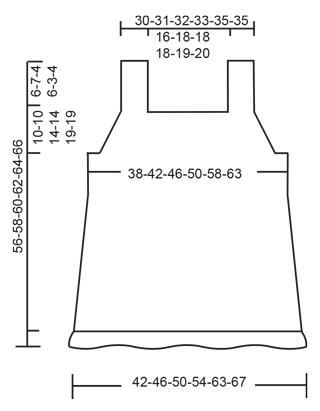
|
||||||||||||||||
|
Have you made this or any other of our designs? Tag your pictures in social media with #dropsdesign so we can see them! Do you need help with this pattern?You'll find tutorial videos, a Comments/Questions area and more by visiting the pattern on garnstudio.com. © 1982-2024 DROPS Design A/S. We reserve all rights. This document, including all its sub-sections, has copyrights. Read more about what you can do with our patterns at the bottom of each pattern on our site. |
||||||||||||||||








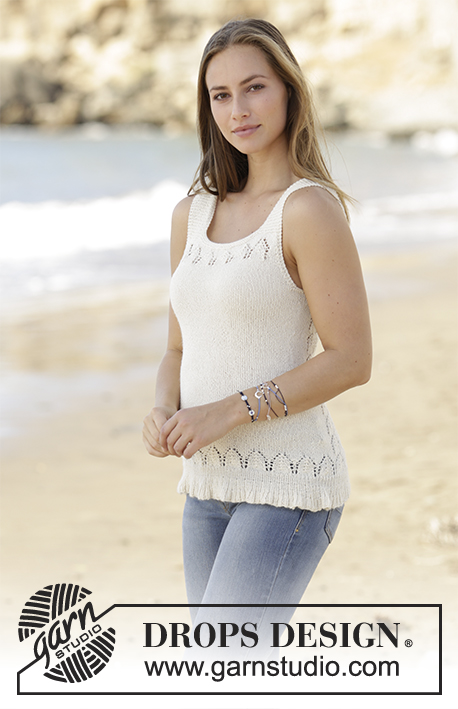



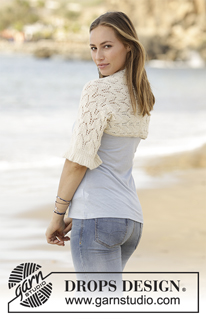
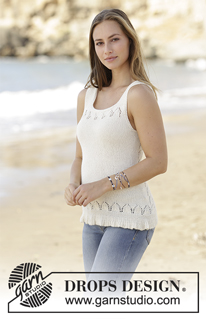

















































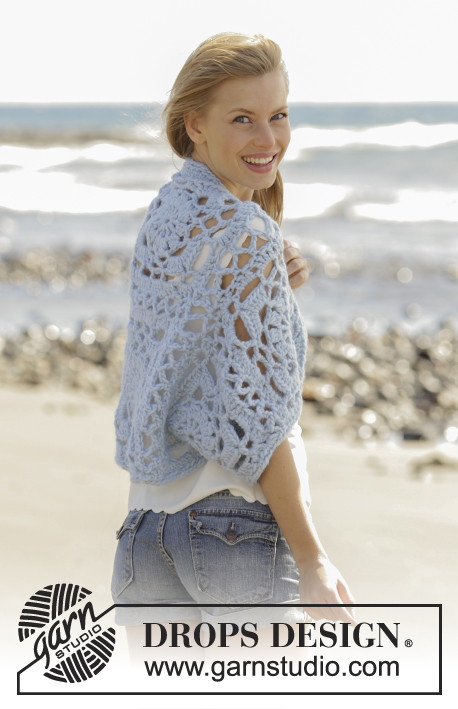







Comments / Questions (32)
Das gern You 6 hat viel weniger Lauflänge und trotzdem Garngruppe A mit der gleichen Maschenprobe. Kann ich mich dann bei dieser Anleitung an die angegebene Maschenzahl halten?
11.05.2018 - 12:01DROPS Design answered:
Liebe Jutta, Bei jeder Qualität wird gewählt, die Maschenprobe, um das beste Ergebnis zu bekommen. Solange Sie die gleiche Maschenprobe erreichen, können Sie ein anderes Garn gleicher Gruppe benutze. Bitte beachten Sie, dass Garne mit unterschiedlichen Strukturen auch unterschiedlich aussehen. Weitere Ausküfnte und Hilfe bekommen Sie von Ihrem DROPS Laden (auch telefonisch oder per mail). Viel Spaß beim stricken!
11.05.2018 - 13:31Hallo, leider gibt mir der Garnumrechner nicht an, wieviel Garn ich für dieses Set von You 6-9 benötigen würde. Können Sie es mir bitte für diese 3 Garne sagen?
11.05.2018 - 10:44DROPS Design answered:
Liebe Jutta, hier finden Sie, wie man die neue Garnmenge kalkulieren. Viel Spaß beim stricken!
11.05.2018 - 11:47Hallo , voor de boord , na 3 cm iedere ándere 2 steken. Tot 1 steek maken , wat bedoeld u met met \" iedere andere \" ?\r\nBedankt \r\nVera
16.04.2018 - 10:19What are the bust sizes in inches for each size of the top
02.03.2018 - 04:31DROPS Design answered:
Dear Sandra, you will find all finished measurements in each size in the measurement chart at the bottom of the pattern. They are taken flat from side to side (in cm). Compare these to a similar garment you have and like the shape to find out the matching size. Happy knitting!
02.03.2018 - 08:40Ik heb in mijn breiwerk het effect van knobbels, volgens de afbeelding zou dit glad moeten zijn. Het is op de plaats waar ik de 2 st samenbrei en 1 steek overhaal. Hoe kan ik dit oplossen aub? Ik zou het wel heel sterk moeten aantrekken bij het opspannen. Ik vrees dat dit niet gaat lukken. Alvast bedankt voor uw antwoord.
03.08.2017 - 13:05DROPS Design answered:
Hoi Karin, Wat er precies gebeurt waardoor er knobbels ontstaan, kan ik vanaf hier jammer genoeg niet zien. Misschien moet je iets losser breien. Bekijk evt. ook even deze video over hoe je 2 st. samenbreit en 1 overhaalt:
06.08.2017 - 22:55Jeg ble usikker på om3rett og tre vrang stemmer. strikker toppen. Jeg får heller ikka antall masker etter felling til å stemme?, valgte xl etter målene på bildet, det ble alt for stort. Er vanligvis M, men målene stemmer ikke. Så nå at det en plass står en rett og trevrang på vrangborden, hva er riktig?
21.06.2017 - 21:29DROPS Design answered:
Hei Marita. For at du skal få målene til å stemme, må du sjekke at du får den strikkefastheten som er oppgitt i oppskriften. Legg opp 624 m (str. xl), strikk 1 omg rett, deretter strikkes det 1 rett, 3 vrang, gjenta dette omg ut. Når arb måler 2 cm felles alle 3 vrang til 2 vrang = 468 m. Når arb måler 3 cm felles annenhver 2 vrang til 1 vrang = 390 m på pinnen. Når arb måler 4 cm felles de resterende 2 vrang til 1 vrang =312 m igjen på pinnen. Nå har du 1 rett, 1 vrang hele omg = 312 m. Nå starter du på A.1 og når A.1 er strikket 1 gang i høyden er det også felt 52 m (2 m felt på hver rapport av A.1) = 312 m – 52 felte m = 260 m på pinnen etter A.1 er strikket 1 gang i høyden. God Fornøyelse!
22.06.2017 - 08:53Hei. Lurer på om oppskriften stemmer. Antall masker stemmer ikke nårman har felt. Er det riktig med tre rett og tre vrang, dadet ser ut som bølgemønstret på bildet ikke ser så tett ut. Er det bare vrang masker som skal felles? Ingen rette? Snakker im borden nede.
20.06.2017 - 21:32DROPS Design answered:
Hei Marita. Kan du spesifisere litt mer? Hva strikker du, toppen eller skulderstykket?
21.06.2017 - 07:28Hei, lurer på om det er feil i oppskriften. Får ikke antall masker til å stemme før og etter inntak. Dessuten syns jeg ikke mønsteret med 3 rett og tre vrang stemmer med bildet? Der syns jeg det ser ut som det er større bølgemønster i nedre kant enn det blir med tre rett og tre vrang. Og stemmer det at det er kun vrang masker som skal felles og ikke noe på rettmaskene? Setter stor pris på raskt svar. Mvh Marita Kjørsvik
16.06.2017 - 12:48DROPS Design answered:
Hei Marita. Se svaret over :)
22.06.2017 - 08:58Buonasera,sto facendo la Tg S .Sono arrivata al punto che bisogna lavorare a legaccio sulle 6 m prima e dopo il segnapunti ,ma a lato del segnaposti ci sono solo 5 m dopo le diminuzioni del corpo.Potete aiutarmi?grazie
09.06.2017 - 22:12DROPS Design answered:
Buonasera Benedetta. È corretto che rimangano 5 m. Deve iniziare a lavorare le 6 m a legaccio alla terzultima riga del diagramma A2. In questo modo la maglia che manca è una maglia rasata del diagramma A2. Buon lavoro!
09.06.2017 - 22:35Als je de derde keer moet minderen in de boord (van 3 st averechts naar 1st) eerst moet je van 3 st averrecht naar 2st, 2st naar 1st, dan staat er geschreven van 2st averechts naar 1st maar da kan niet je heb mar 1st averrecht over
09.06.2017 - 06:29DROPS Design answered:
Hoi Sonja, Bij de tweede keer minderen (dus bij een hoogte van 3 cm) minder je iedere andere 2 steken averecht tot 1 steek averecht. Dus je mindert niet alle 2 steken averecht, maar de helft. De derde keer mindere je de andere helft van de 2 steken averecht naar 1 steek. Veel breiplezier!
09.06.2017 - 09:00